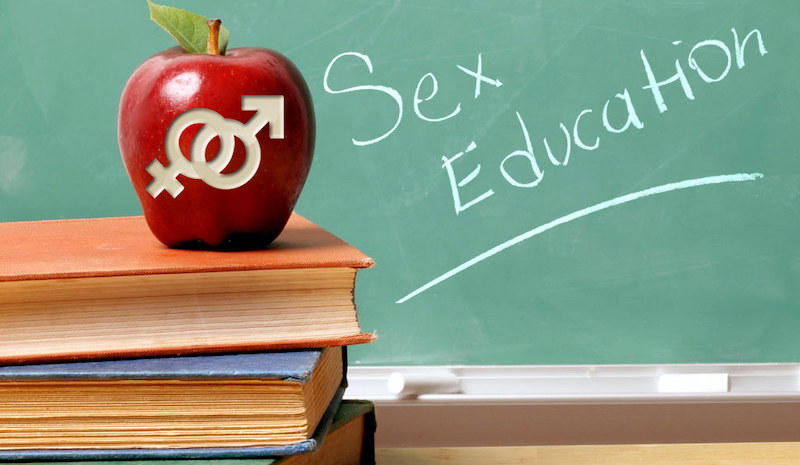ABSTRACT
The incidence of teenage pregnancy has been on the rise in Nigeria, especially in Lagos State. Adults rarely discuss sexual matters with teenagers.
Thus, teenagers have little or no information about the biological changes that take place in their bodies during the transitional period from youth to adulthood.
This has resulted in unplanned pregnancies for the vast majority of teenagers, which have serious developmental and socioeconomic implications. The study was to explore how sex education could mitigate teenage pregnancy in Nigeria, and Lagos State.
A total sample size of hundred (100) respondents was used for the study.
Three questionnaires were used to collect data for the study and the study revealed that lack of sex education in the school, parent’s rejection of the inclusion of sex education in the school curriculum, and teacher’s not discussing sexual issues with students are the major causes of teenage pregnancy in the study area.
The findings from the study revealed that sex education is a major tool for reducing teenage pregnancy and there is a need for parents and teachers to empower teenagers through sex education to equip them with knowledge in order to reduce teenage pregnancy.
The study recommended that sex education be included in the school curriculum as a compulsory subject and that parents should be intentional about educating their children on sex-related issues.
Keywords: sex, sex education, teenage pregnancy, teenagers and curriculum.
TABLE OF CONTENTS
Pages
Title i
Certification ii
Dedication iii
Acknowledgment iv
Abstract v
Table of Contents vi
CHAPTER ONE: INTRODUCTION
1.1 Background to the Study
1.2 Statement of the Problem
1.3 Purpose of the Study
1.4 Research Questions
1.5 Research Hypotheses
1.6 Significance of the Study
1.7 Scope of the Study
1.8 Limitations on the Study
1.9 Operational Definition of Terms
CHAPTER TWO: REVIEW OF RELATED LITERATURE
2.1 Conceptual Framework
2.2 Theoretical Framework
2.3 Empirical Review
2.4 Summary of Literature Review
CHAPTER THREE: METHODOLOGY
3.1 Research Design
3.2 Population of the Study
3.3 Sample and Sampling Techniques
3.4 Research Instrument and Instrumentation
3.5 Administration of Research Instrument
3.6 Validity of the Instrument
3.7 Reliability of Instrumentation
3.8 Method of Data Analysis
CHAPTER FOUR: DATA ANALYSIS, RESULTS AND DISCUSSION OF FINDINGS
4.1 Demographic Information of Respondents
4.2 Testing of Research Hypotheses
4.3 Discussion of Findings
CHAPTER FIVE: SUMMARY, CONCLUSION AND RECOMMENDATIONS
5.1 Summary
5.2 Conclusion
5.3 Recommendations
Reference
Appendix
CHAPTER ONE
INTRODUCTION

1.1 Background to the Study
A number of challenges arise during adolescence, a transitional period of physical and Psychological development between childhood and adulthood covering the year between ages 10-19 (World Health Organization, 2014).
The word adolescence is derived from the Latin word “adolescent” which means to ripen or to grow up.
It is used to refer to that period which marks the transition between puberty and adulthood in humans.
Adolescence is an important developmental period that is characterized by heightened problems of adjustment. Virtually all students in Public Junior Secondary Schools are adolescents and therefore, the period of puberty and maturity occurs during this stage (Fakunle, 2012).
Experience has shown that adolescents are curious about aspects of their sexuality as well as the nature of sexuality in general and that many will seek to experience their sexuality in some way (World Health Organization, 2014).
Newspaper publications and magazines have abundant means of increasing student’s engagement in sexual activities and reports of pregnancy among Junior Secondary School Students is becoming rampant, especially in Nigeria.
The problem of teenage pregnancy is considerably worse in Nigeria than in any other developing country.
Among developing countries, Nigeria has one of the highest birth rates for women less than 20 years and Study suggested that the problem of teenage pregnancy in Nigeria may be related to less sex education in schools and lower availability of birth control services and supplies to adolescents (Encarte, 2010).
Despite national preventative efforts in several countries, teenage pregnancies remain a cause for concern.
The reports show that worldwide, the figure has reduced from 65/ 1,000 in 1990 to 47/1,000 in 2015.
Sex is a lasting problem inseparable from the earlier stage of life, and heightens at the period of adolescence, Today’s adolescents are confronted by sexual maladjustment and several challenges to their own value about sex resulting from various sources adults, peers, and even the mass media (Oganwu, 2010).
However, in an attempt to solve these above-mentioned problems, sex education which is a life-long process of acquiring information on sex and forming attitudes, values, and beliefs should be introduced to secondary school students of all ages, but the amount of information given would depend on the child’s level of understanding.
Comprehensive school-based sex education that is appropriate to student’s age, developmental level, and cultural background is an important part of the school curriculum at every grade (Adepoju & Daodu, 2011).
Sex education is based on the instruction on issues relating to human sexuality such as human sexual anatomy, sexual reproduction system, sexual intercourse, reproductive health, emotional relations, reproductive rights, and responsibilities. Sex education is also designed to give correct and adequate factual information and understanding of problems of sex, such as its development, function, and expression.
The science of sex education is concerned with the acquisition of factual information about positive attitudes, beliefs, and values as well as the development of skills to cope with the biological, spiritual, and emotional aspects of human sexuality (Donkor & Lariba, 2017).
The biological aspect of sexuality refers to the reproductive mechanism as well as the basic biological drive, and libido that exist in all species, which is strongly influenced by hormonal levels.
The emotional or physical aspect of sexuality refers to the bond that arises between individuals, and it is manifested physically or emotionally through love, trust, and care.
Therefore, sex education is desirable so that teenagers will have enough reasons to avoid sex and cultivate a wholesome attitude to sexual experience when they are mature enough to do so.
So sex is a part of human nature, and for its proper and correct use, adequate and necessary sex education must be given to the adolescent.
Sex education starts before children are old enough to be embarrassed by the subject.
There is adequate information on effective birth control as well (United Nations International Children’s Emergency Fund, 2011).
The introduction of sex education will expose teenagers to the problems they are likely to encounter sometime in the future because most secondary school students learn from the Internet. Omoegun (2010) identified some factors leading to sexual maladjustment
- Rapid biological development in some girls
- Lack of guidance and counseling education
iii. Lack of parental care
- Ignorance
- Inadequate information on sex education
Other factors include;
(a) Teenage girls having relationships with older male counterparts
(b) Watching pornography films
(c) Frustration and disappointment. Etc.
The intolerance for sex education and sexual encounters among the youth of Nigeria is becoming increasingly alarming.
These lead to unwanted pregnancies, prolific infections, and massive drop-out rates from schools.
The risk of contracting HIV virus is very high among the youth.
Girls are worst affected by early pregnancies cutting short their dreams to continue their education. In the absence of a cure or vaccine for teenage pregnancy or HIV/AIDS, educating children about safe sex is regarded by many as the primary means of prevention (Fakunle, 2012).
The United Nations and others have described educating children about safe sex as the social vaccine but the question of how best to do this has long been debated (Donkor & Lariba, 2017).
The need for such efforts remains acute but it is fraught with difficulty as deep-rooted socio-cultural, religious, and moral constraints remain barriers to effective sex education across Africa (Secura, Madden, Buckel & Peipert, 2014).
The goal of comprehensive school-based sex education is to help young people gain a healthy view of sex, provide them with sexual health information and skills, and empower them to make sound decisions now and in the future (Encarte, 2010).
1.2 Statement of the Problem
Adolescents are the future and therefore require proper guidance that will propel them into responsible productive adults useful to themselves and their nations.
It is clear that our teenagers in school are confronted with various problems related to sex, teenage pregnancy, child abuse, frustration, sexual coercion, and complicated abortion (World Health Organization, 2014).
The Nigerian Association for the Promotion of Adolescent Health and Development, (NAPAHD), found that a hospital-based research study in 2012 revealed that 80% of patients with complicated abortions in hospitals are adolescents (NAPAHD 2012).
The situation can be attributed to ignorance of sex education and the implications of pre-marital sexual activities.
Therefore, it becomes necessary to embark on research on the impact of sex education on the reduction of teenage pregnancy and other related sexual problems in secondary schools.
1.3 Purpose of the Study
The main purpose of this study is to assess the impact of sex education on the reduction of teenage pregnancy among Public Junior secondary school students in Lagos State Educational District V.
Specifically, the major objectives of the study are:
- To investigate the rate of teenage pregnancy in Public Junior Secondary Schools in Lagos State Education District V.
- To examine the perspective of parents on the introduction of sex education into the school curriculum in Public Junior Secondary Schools in Lagos State Education District V.
- To examine teachers’ open discussion on sexual issues with teenagers and the reduction of teenage pregnancy in Public Junior Secondary Schools in Lagos State Education District V.
1.4 Research Questions
The following research questions were raised based on the purpose of the study
- Is there a decline in the rate of teenage pregnancy as a result of the introduction of sex education in Public Junior Secondary Schools in the Lagos State Education District V area?
- What is the parents’ perspective on the introduction of sex education in the school curriculum on the reduction of teenage pregnancy in Public Junior Secondary Schools?
- Does a teacher’s open discussion on sexual issues affect the rate of teenage pregnancy in Public Junior Secondary Schools in Lagos State Education District V?
1.5 Research Hypotheses
The following research hypotheses were tested in order to find answers to the stated research questions.
Ho1: There is no significant relationship between the introduction of sex education and the decline in the rate of teenage pregnancy among students in Public Junior Secondary Schools in Lagos State Education District V.
Ho2: There is no significant relationship between parent’s perspectives on the introduction of sex education in the school curriculum and the reduction of teenage pregnancy in Public Junior Secondary Schools in Lagos State Education District V.
Ho3: There is no significant relationship between teacher’s open discussion on sexual issues and the reduction of teenage pregnancy in Public Junior Secondary Schools in Lagos State Education District.
1.6 Significance of the Study
The outcome of this study will help teenagers gain a healthy view of sex education, provide them with the correct sexual information and skills, and empower them to make sound decisions now and in the future. It will enlighten parents on the importance of sex education in secondary schools, hereby easing their efforts in raising and counseling their adolescent children.
The study will also assist female students in avoiding early sexual involvement and unwanted pregnancy.
Guidance and counseling departments in secondary schools will have less work to do if sex education is to be included in the curriculum in terms of helping to give students solutions on how to deal with psychological and sexual-related problems that might affect their studies.
It is anticipated that this study will be useful to students, parents, educationists, and health authorities in their effort to fight the social menace of teenage pregnancy in Nigeria and beyond.
1.7 Scope of the Study
This research work focused on the impact of sex education on the reduction of teenage pregnancy among Public Junior Secondary Schools in Lagos State Education District V.
1.8 Limitations of the Study
During the course of this study, many things militated against its completion, some of which are:
- Time Constraint: The time frame given to accomplish this project was very short due to the school academic calendar and it was carried out under pressure which made the researcher not to implement some necessary features.
- Financial Constraint: Insufficient fund tends to impede the efficiency of the researcher in sourcing the relevant materials, literature or information and in the process of data collection (internet, questionnaire, and interview).
1.9 Operational Definition of Terms
Sex: the sexual instinct or attraction drawing one organism toward another, or its manifestation in life and conduct.
Education: The process or art of transmitting knowledge, skills, ideas and cultures from generation to generation, either formally or informally.
Puberty: The age at which a person is first capable of sexual reproduction.
Pregnancy: The progression of stages from conception to birth.
Abortion: The cessation or termination of pregnancy or fetal development.
Adolescent: A teenager, a juvenile after puberty.
Sexuality: Concerned with, or interested in sexual activities.
Libido: is a person’s overall sexual drive or desire for sexual activity.
Infection: An uncontrolled growth of harmful microorganisms in a host.
Reproduction: The act of reproducing new individuals biologically.


Be the first to comment